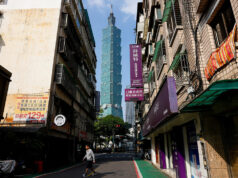GDP growth slowdown expected to persist
ECONOMIC EXPANSION will likely ease further in 2019 as last year’s interest rate hikes are expected to pull down consumer spending, Natixis Research said, even as it noted that the Philippines will remain “resilient” to global slowdowns.
The global economic research outfit projects Philippine gross domestic product (GDP) growth at 6.2% this year, down from a 6.4% forecast for 2018. If realized, this would be the slowest pace in four years, and would miss the 7-8% growth target set by the administration of President Rodrigo R. Duterte.
Philippine GDP growth averaged 6.3% in 2018’s first three quarters, against a downward-revised 6.5-6.9% government forecast for the entire year. Overall economic expansion slowed to 6.7% in 2017 from 2016’s 6.9%, though keeping within the government’s 6.5%-7.5% target range.
“The great news about the Philippines is that its investment growth is in double digits, which is much-needed after decades of lackluster investment,” Natixis economist Trinh D. Nguyen said in a report published in December.
“While investment remains strong, consumption is decelerating to 5.2% year-on-year in Q3 2018 as higher price pressures bite,” she noted.
“We also expect the tightening measures so far filter through to dampen domestic demand.”
Ms. Nguyen was referring to successive increases in benchmark interest rates fired off by the Bangko Sentral ng Pilipinas in 2018. Policy rates went up by a total of 175 basis points (bp) as the central bank sought to rein in price expectations, at a time when inflation soared to nine-year highs.
Higher borrowing costs are said to have already weighed on consumer spending in the third quarter, resulting in a slower-than-expected 6.1% expansion in those three months.
Still, Natixis said the economy may be headed for a good year, with inflation expected to ease following an uptrend observed a year ago, assisted by a decline in world crude prices. From a high of 5.1% expected of 2018 — actual headline inflation averaged 5.2% in the nine months to November — the overall increase in prices of basic goods is seen averaging 3.5% this year to return to the BSP’s 2-4% target band.
“The Philippines is largely domestic-oriented and likely to be among the most immune to China slowdown and trade war in Asia. We expect growth to remain resilient in 2019 despite a regional slowdown,” Natixis added.
At the same time, the Philippines is expected to continue to post a trade deficit, although narrower than the previous year.
“We expect the Philippines to follow the Fed most closely given its current account deficit position, which means it needs to both stabilize the currency and lift rates. The good news is that the hiking is close to over — expect only a 25 bp hike to take rates to five percent,” the report read.
The key rate now stands at 4.75%, the highest in nearly a decade. — Melissa Luz T. Lopez



